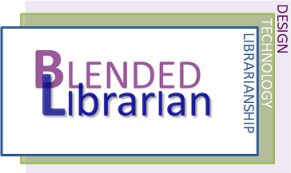Blended librarians are educators.
They teach students the effective use of library tools as they learn how to engage in college-level research. They conduct workshops, design lesson plans and create self-paced instruction tutorials.
They are in the classroom less than non-librarian faculty, but whatever teaching they do does benefit from a knowledge of educational theory and practice. Whether it’s designing an activity-based learning task or getting students to participate in a discussion, blended librarians bring a toolbox of instruction design and learning skills to their work.
No matter how much time they spend in the classroom, like non-librarian faculty, blended librarians could always learn more about teaching. That’s why I attended the Provost’s Teaching Academy (PTA).
PTA is organized and led by colleagues at my institution’s Teaching and Learning Center. Like your own center for teaching excellence, ours offers an array of learning programs for educators. On occasion there are opportunities for librarians to participate. For six weeks in May and June, I took advantage of an invitation to join the annual PTA. I later learned that many faculty apply but there are too few seats. Fortunately, the Center sets aside a few spots for administrators.
There’s a significant time commitment. Six hours every week in the classroom plus plenty of reading and assignments. If you consider yourself a student of learning it’s hardly a chore – more like a smorgasbord of pedagogical discovery. As a librarian I saw two distinct benefits.
1 – Learning more about our faculty and what their needs and concerns are when it comes to students and instruction. Hearing their frontline stories gave me a much greater appreciation for the challenges our faculty colleagues face, from dealing with devices in the classroom to leading hot topic discussions.
2 – Serving as a resource for my faculty colleagues. Many of them infrequently encounter librarians, but when they do the questions flow. Tips for getting the most out of a certain resource. How to get involved in our alternate textbook project. Understanding a creative commons license. Embed a blended librarian in a faculty learning program and good things happen.
My takeaways included lots of new theory and practice ideas, simple learning activities to engage students and resources that offer ample active learning possibilities. Three big ideas emerged.
Fink’s Model – New to me – maybe not you. This gave me a new approach to writing learning goals and then moving on to the assessment plan followed by the learning activity that will meet the goal and allow for the assessment to occur. Similar to backward design but referred to as “integrated course design”, Fink’s model adds a plan for integrating “significant learning” into the process. There are six dimensions, such as foundational, human, caring and learning to learn. The idea is to work at least one or two dimensions into each learning goal and to aim for all six dimensions across all your goals. If you can design a goal that integrates all six dimensions – bonus points for you.
Leading discussions – While opportunities to engage students in a discussion during a library instruction session that lasts 90 to 120 minutes are rare, discussion can be a powerful learning method. Blended librarians are also challenged because the students really don’t know who we are, so the trust factor that is required for a good discussion is typically absent. However, if you lack a good discussion activity or are unprepared to lead it, you can have all the time and trust in the world and it won’t matter. I discovered a whole new trove of ideas for discussion activities. The ideas are out there. Explore. Practice. Engage.
Difficult conversations – Hot button discussions, around issues of race, privilege, ethnicity, gender, etc., are rarely anticipated by blended librarians – and that’s the case for many faculty as well. But when we least expect it, a student comment, question or remark can ignite a heated discussion. Or we can ignore it – but that strategy is not without ramifications. I learned several methods for tackling difficult conversations, whether you feel prepared to handle it or need a strategy for de-escalating what might be a tension filled room. Since blended librarians typically prepare for their instruction with faculty, it may be best to broach the topic and see what the possibilities are – and to then plan on engaging and working with the faculty member to lead the conversation.
There was much more beyond these three items that will help me to improve my pedagogy and be more effective in the classroom. I’m also coming away from the PTA equipped with new ideas, strategies and resources that I can share with faculty who ask me for research help but which often leads into conversations about teaching. PTA graduates are encouraged to mentor or coach their colleagues by sharing what they’ve learned in order to disseminate new practices and improve the overall quality of teaching at the institution.
Find out if your institution has something similar to our PTA. If there is something comparable, find out if librarians are welcome. If nothing like this is currently offered at your institution, recommend it to the Teaching & Learning Center staff (sorry if I’m showing some privilege here but I realize many smaller institutions may not have a full fledged T&LC – but there usually is someone tasked with improving learning among faculty). I’m hoping that my library colleagues will be able to attend in future years. It’s difficult to imagine how participating in the PTA would be anything but immensely helpful to a librarian-educator.
